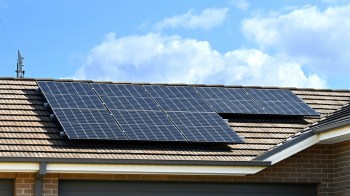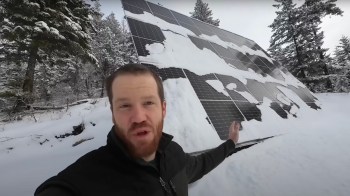Solar panels help us capture the abundant power of the sun to provide clean, sustainable energy, and experts have been working hard to improve the technology these past few years.
One of the latest breakthroughs comes in the form of a flexible perovskite-and-silicon solar cell with a record efficiency of 22.8%, as reported by Interesting Engineering.
The pairing of the two materials helps to increase the overall efficiency of the cell. Silicon tends to max out at around 33% on its own, according to CleanTechnica, and it's known to be brittle and crack under stress.
Perovskite is a natural mineral with special electrical and optical properties, but it's also flexible in its own right. By combining the two, scientists in China were able to compose a much thinner product that's only 30 micrometers thick, or 30 millionths of a meter.
These flexible cells have undergone extensive bend tests, and after 3,000 cycles, they still managed to retain 98.2% of their initial performance.
The emergence of these resilient, efficient, and bendy solar cells opens up a host of applications. They can more easily be applied to boats, RVs, and other oddly shaped structures to help increase our overall solar capacity and support our growing energy needs.
Save $10,000 on solar panels without even sharing your phone number Want to go solar but not sure who to trust? EnergySage has your back with free and transparent quotes from fully vetted providers that can help you save as much as $10k on installation. To get started, just answer a few questions about your home — no phone number required. Within a day or two, EnergySage will email you the best local options for your needs, and their expert advisers can help you compare quotes and pick a winner. |
Currently, around 67% of small-scale solar capacity is being used in residential areas, with 27% in commercial settings and 6% for industrial applications, per the Energy Information Administration. All three segments combined are expected to grow in capacity from 44 gigawatts in June 2023 to about 55 gigawatts by the end of 2024.
NASA has already been testing the use of bendable solar cells, though those peak at around 17.6% efficiency. Korean researchers have been working on organic solar cells with elastic properties for use in wearable applications. Some have simply been trying to decrease the weight of normal panels for safer rooftop use.
Expanding the use of solar panels is just one way to generate clean, sustainable energy. By pairing that with other renewables such as wind, hydro, and geothermal, we can dramatically reduce our reliance on dirty fuels.
You can be a part of the shift toward more renewable solar energy and save money while you're at it. The Inflation Reduction Act offers tax rebates that cover up to 30% of the cost to install your own rooftop solar system.
TCD Picks » Upway Spotlight
💡Upway makes it easy to find discounts of up to 60% on premium e-bike brands
Join our free newsletter for weekly updates on the coolest innovations improving our lives and saving our planet.














